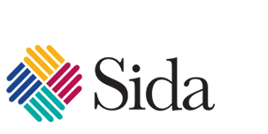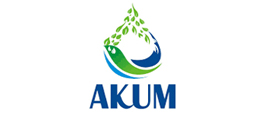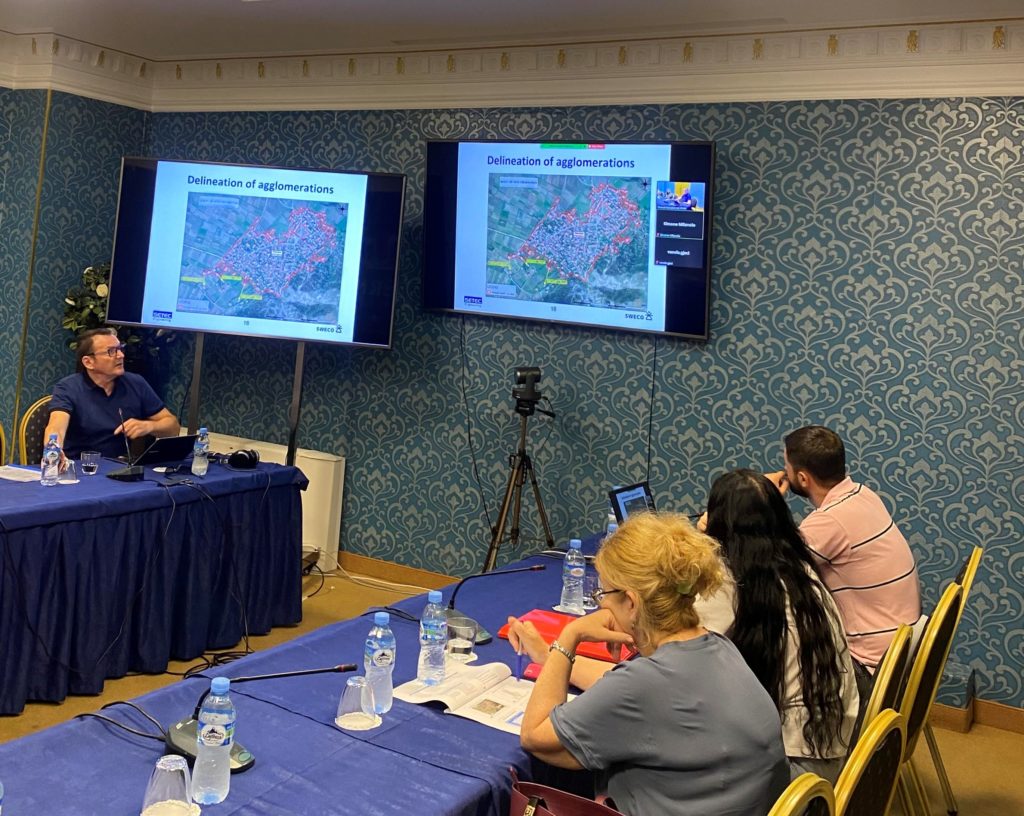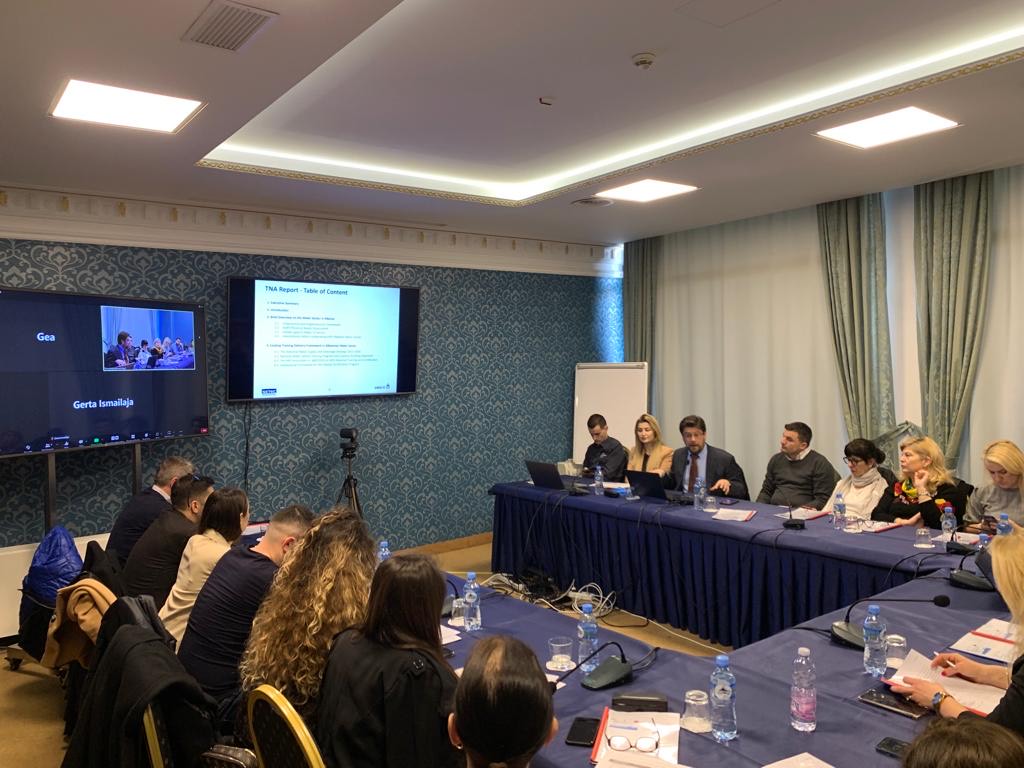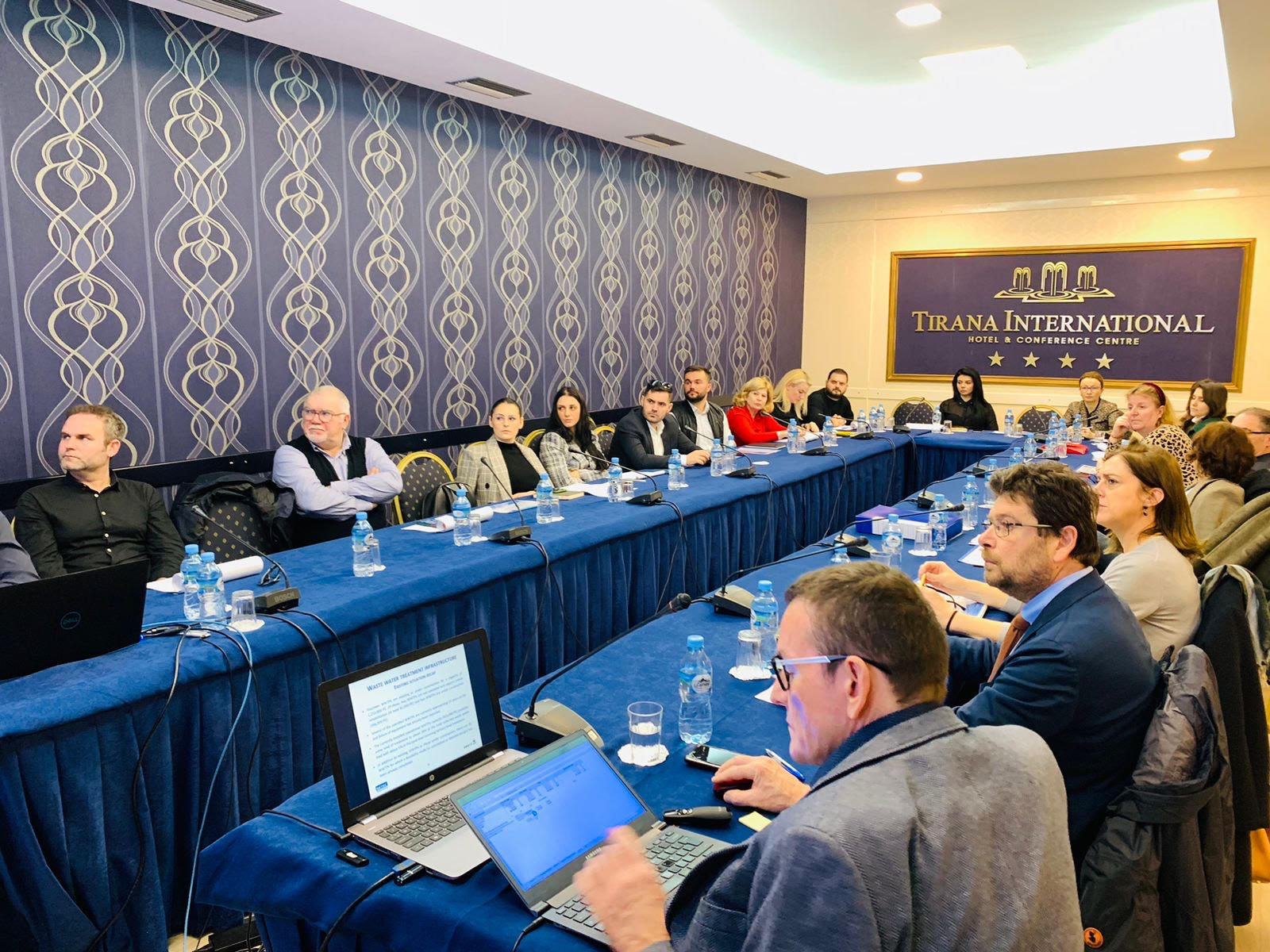On 30 June the DSIP Working Group gathered for a workshop in Tirana, to discuss Urban Wastewater Treatment Directive (UWWTD) under the tasks of NIPS project. The implementation of the UWWTD is considered one of the most challenging tasks in the water sector, requiring a multi-sectoral approach, a well-coordinated institutional engagement, and large investments by governments.
NIPS project team made a thorough presentation on the assessment, findings, results, and recommendations as outlined in Chapter 3 of the report on the Implementation Plan. The key components presented were:
- Legal and institutional framework
- Wastewater collection infrastructure
- Wastewater treatment infrastructure
The NIPS team emphasized the requirements of the UWWTD and the challenges that implementation of this directive poses for the Albanian entities directly involved.
Legal and institutional framework
The government of Albania is working to define the draft water legal package in several areas, which will bring also progress on the road toward full transposition of UWWTD. Therefore, the main legal aspects and amendments along with a clear definition of the responsibilities that each entity at any level will have need to be further complemented and elaborated for the following topics:
- The wastewater infrastructure planning
- Investments and construction
- The technical operations standards of such infrastructure
- Water resources
- Finalizing sensitive areas and protected areas
Ministry of Infrastructure and Energy, AKUM, and AMBU as leading entities in policy-making, legal and implementation aspects, along with ERRU in its consulting role are advised by the NIPS consultant team that the findings and conclusions of DSIP should be reflected in this draft water legal package. This package which will bring forward the new water legislation and any related secondary amendment in legislation is expected to be defined in a short-term coming period. The main barriers to implementation are considered to be:
- The allocation of the necessary investments
- Governance arrangements at central, regional and local level, and, in particular
- Lack of resources and administrative capacity.
Wastewater collection infrastructure
Despite the ambitious objectives set out in the Albanian national strategy of water supply and sewerage 2011-2017, waste water collection and treatment is at a low level and needs significant efforts and improvements.
Some key facts:
- Only 47.7% of the total population are connected to a wastewater network. Over 50% – around 1.63 million individuals – are not connected to the sewer network and are treating wastewater locally, in septic tanks and cesspits.
- In total 165 agglomerations are identified, in which are 2.1 million inhabitants. The average agglomeration size in Albania is 23,593 P.E. which is similar to the average of all EU member countries (21,426 P.E).
- The official data of 2020 reveal that wastewater connections rate remains at low level by 52% at the national level (82% in urban areas and 15% in rural areas).
- A total of 111 agglomerations are generating waste water which are discharging to identified sensitive areas.
Findings:
Although some of the sewer networks were originally designed as separate systems, nowadays the unplanned and uncontrolled development has resulted in them all receiving a significant quantity of stormwater.
The present status of the sewer network is generally in poor condition with extensive sections largely exceeding their operational life age and often beyond any possibility for repair.
Wastewater treatment
There are 14 existing or under construction wastewater treatment plants (WWPT) in Albania invested mainly by international financing partners and donors. The potential capacity is up to 1.255.000 P.E. and the designed treatment level is secondary or tertiary with various technology implemented for waste and sludge treatment. Most of the plants have focused on covering the coastal areas of the country. The WWTPs (except Vlora ) are performing at a satisfactory level, but yet there is few available information based on the overall performance.
There are around 14 WWPTs planned to be constructed which are under feasibility study or procurement process. In their first construction phase, they would increase the installed treatment capacity by about 500,000 PE. Such WWTPs are focused in big cities with many inhabitants and are important for the economy and tourism at a national level, where UNESCO protected urban areas are in focus such as Berat or Gjirokastra cities.
Conclusions and tasks
Participants during discussions agreed that better coordination of key actors in sharing data and progress will bring a complete draft legal package. The NIPS project findings and recommendations are important to be integrated in this package to make possible a full transposition of UWWD
- The NIPS project consultants agreed with participants that all key stakeholders, in order to prepare the work on Chapter 4 during the next meeting of the Working Group, will analyze and provide identified gaps in capacity-building needs and provide implementation measures.
- According to the DSIP work plan, Chapter 4 – Gap analysis and Implementation measures should be prepared by September 2022. A Working Group meeting was planned for discussion of this chapter. The Consultant proposed that this work group meeting will not be conducted separately for this chapter, but instead a working group meeting that will cover Chapter 4, Chapter 5 and Chapter 6 should be held end of November 2022, and AKUM will follow approval on the agenda proposed.
The 11 working group participants in this workshop on 30 June represented the following institutions: Ministry of Infrastructure and Energy (MoIE), National Environment Agency (NEA), Water Supply Sector Regulatory Authority (WSSRA), Agency for the Management of Water Resources (AMWR) and NIPS Project.
PLEASE FIND FURTHER DETAILED INFORMATION ON THIS WORKSHOP (MINUTES OF MEETING, POWERPOINT PRESENTATION) ON THE NIPS WEBSITE (ACCESSIBLE ONLY IN PASSWORD-PROTECTED SECTION)

